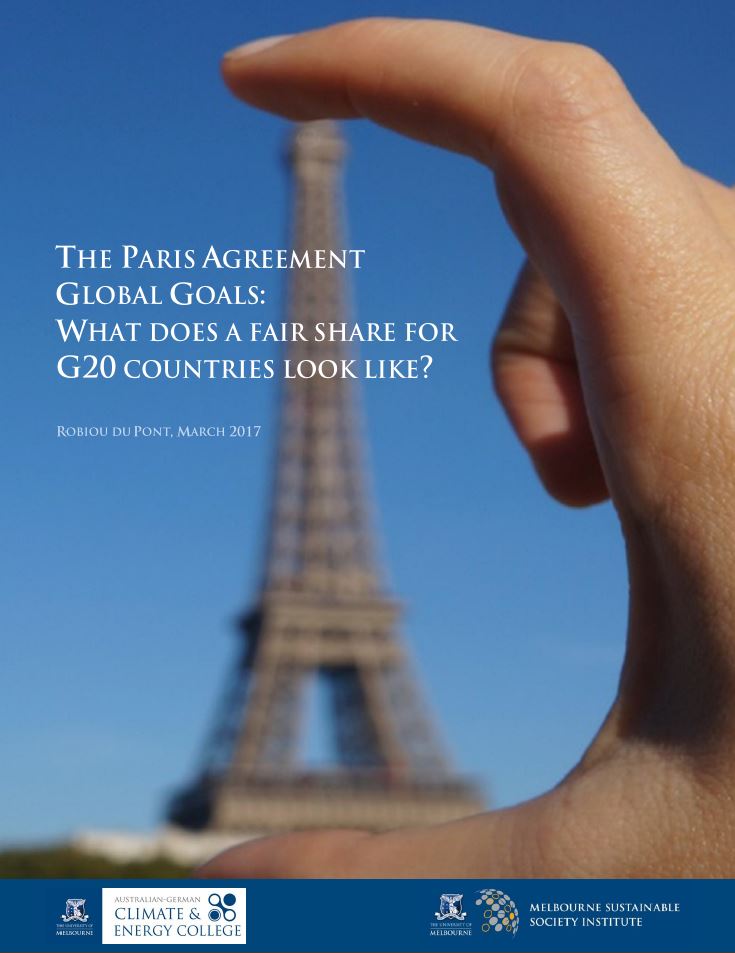The Paris Agreement global goals: What does a fair share for G20 countries look like?
Author: Yann Robiou du Pont12
1 Australian-German Climate and Energy College
2 EU Centre on shared complex challenges
Download full report here.
This report reviews the literature to compare the socio-economic implications and climate impacts of achieving each of the Paris Agreement temperature goals: 1.5 °C and 2 °C. Drawing on a recent publication (Robiou du Pont, Jeffery, Gütschow, et al., Nature Climate Change, 2017) and its related website Paris-equity-check.org, this report then examines the scenarios to reduce greenhouse-gases (GHG) emissions consistent with the Paris global goals.
Finally, this report presents greenhouse-gases (GHG) emissions targets for G20 members consistent with the five effort sharing categories contained in the latest report of the Intergovernmental Panel on Climate Change (IPCC), and compares the equity performances of their climate pledges against their own declarations on equity.

- The pledges of the G20 members are collectively insufficient to meet any concept of equity
- Collectively, G20 pledges for 2030 should be lower by 39 percent (of 2010 levels) to align with the average of the five equity concepts under the 2 °C goal, and 63 percentage lower under the 1.5 °C goal
- The G20 can close the 2030 mitigation gap towards 2 °C and considerably reduce the gap towards 1.5 °C by adopting the average of the five equity allocations
- Brazil and Mexico are the most ambitious countries towards the 2 °C goal with pledges within the range of four out of five equity allocations, followed by the EU whose 2030 pledge is within the range of three
- The pledges of Russia, China, Turkey and Saudi Arabia are weaker than any equity allocation
| Attachment | Size |
|---|---|
| 1.89 MB |